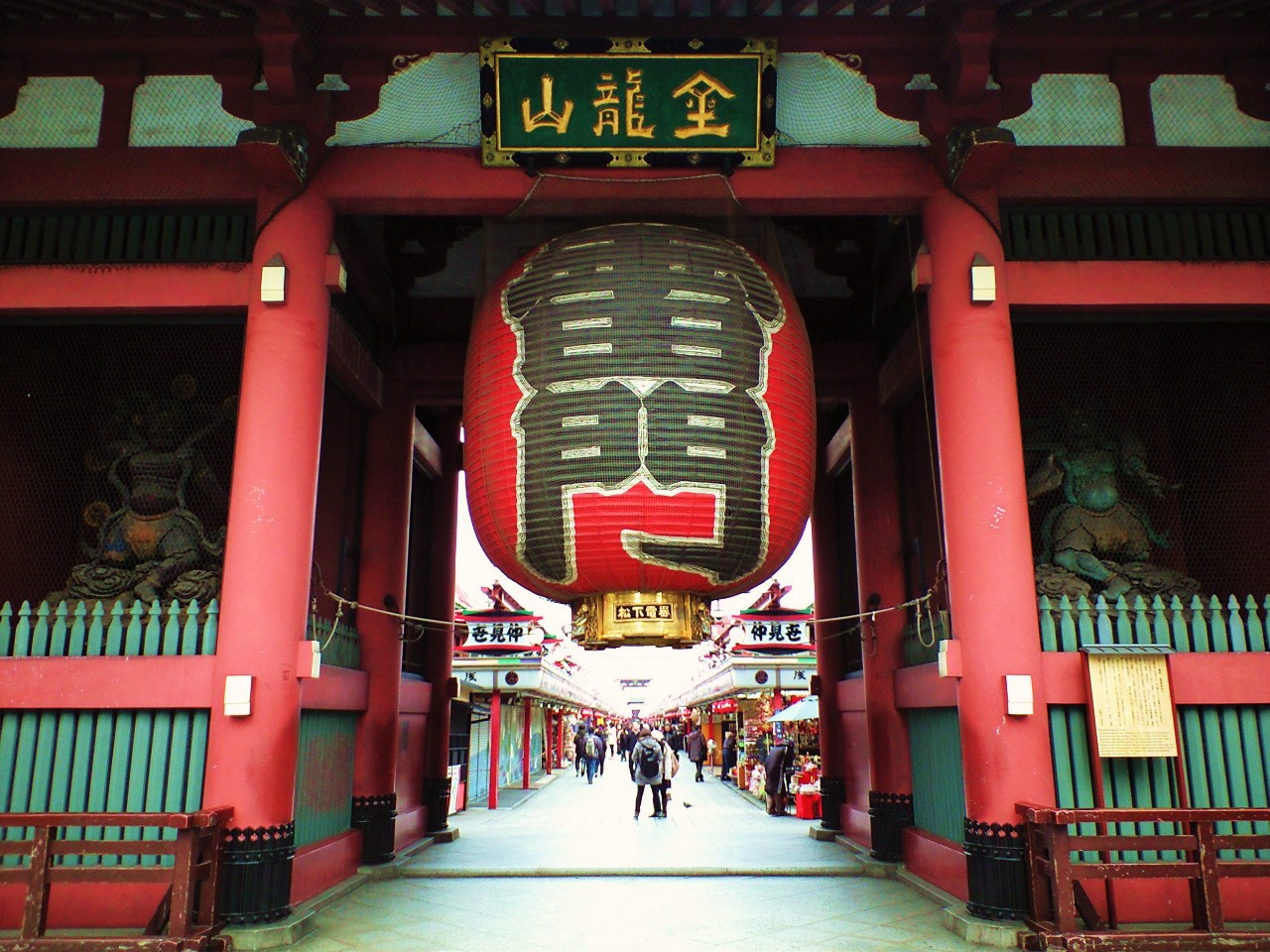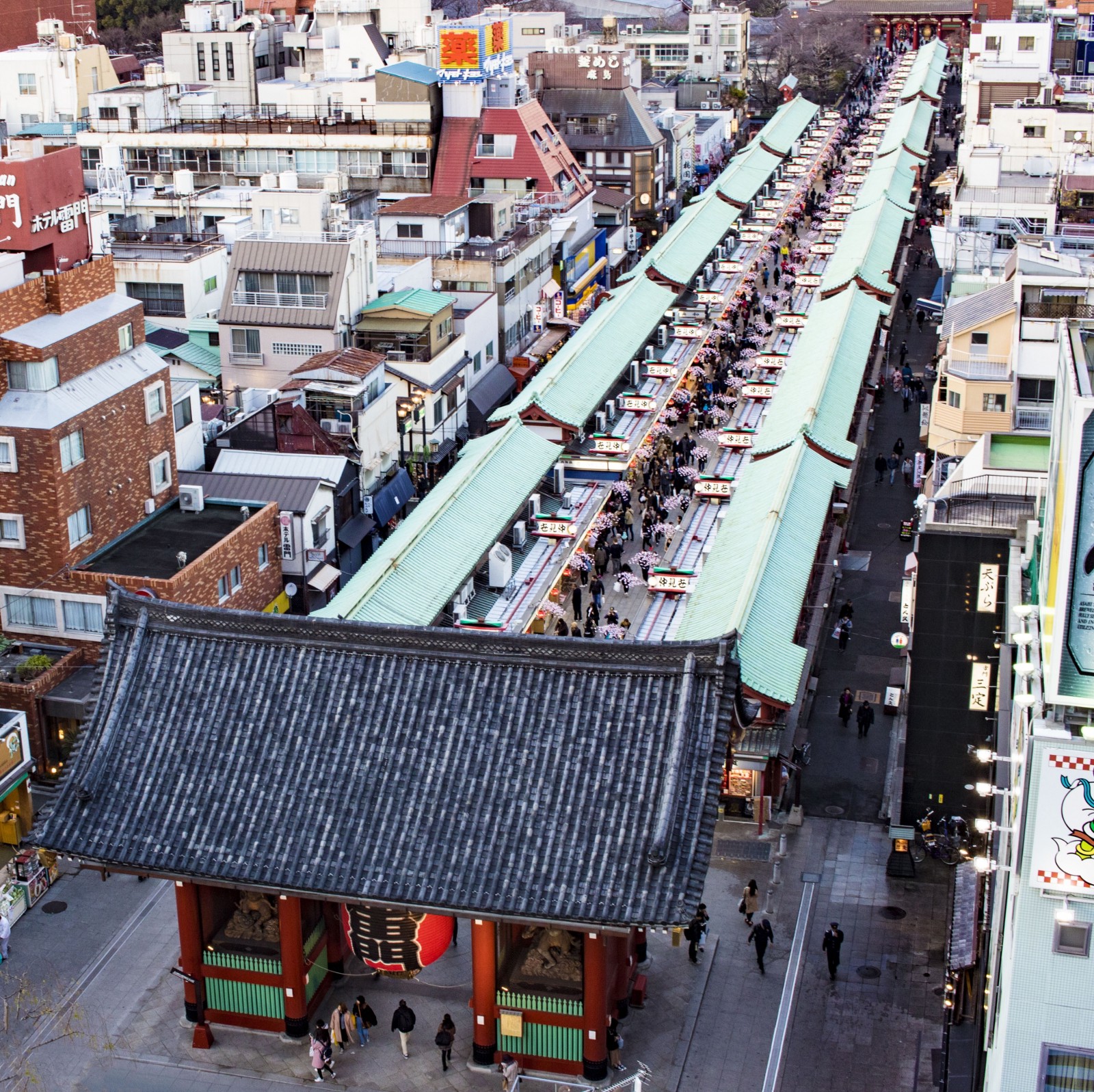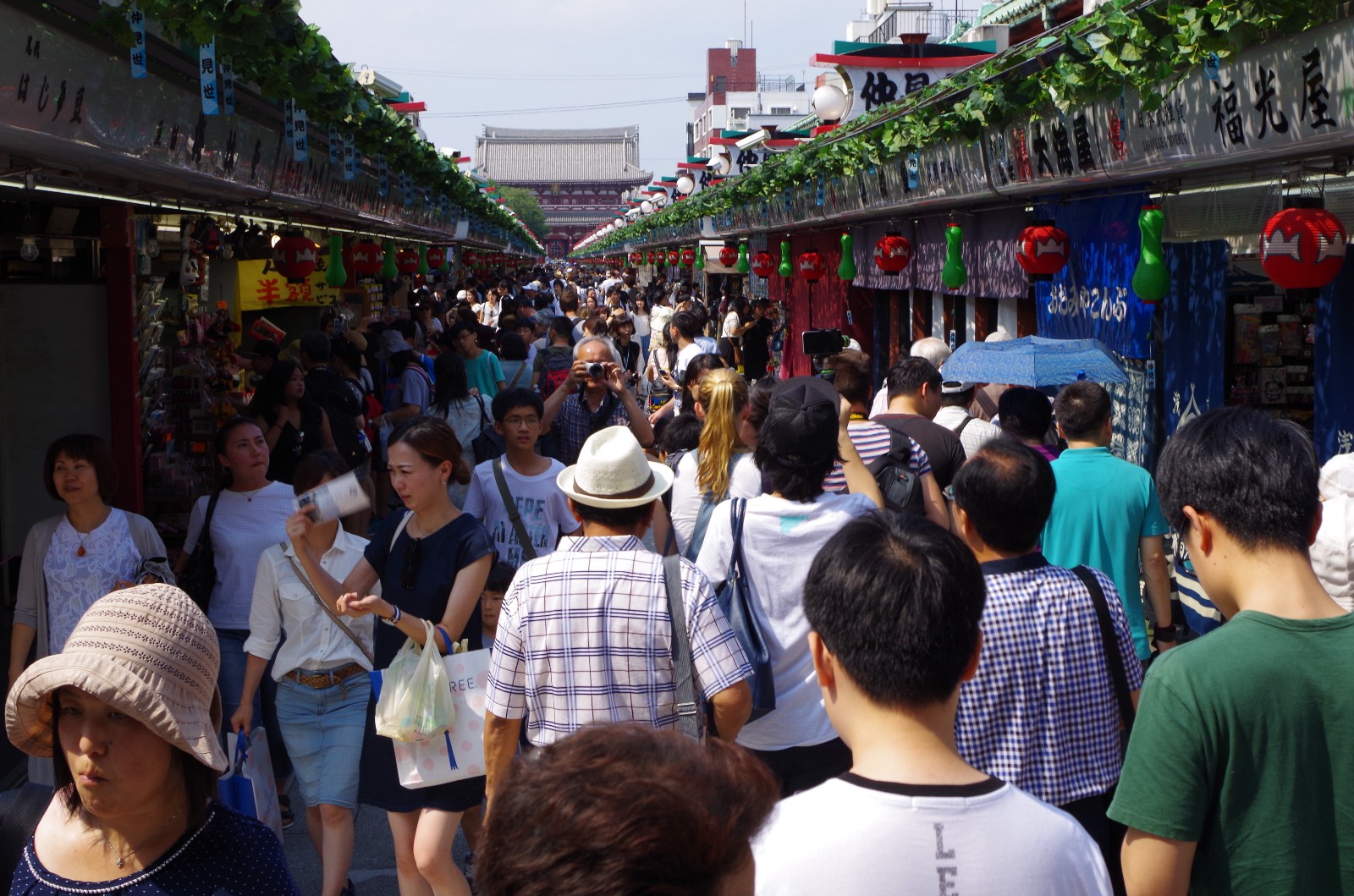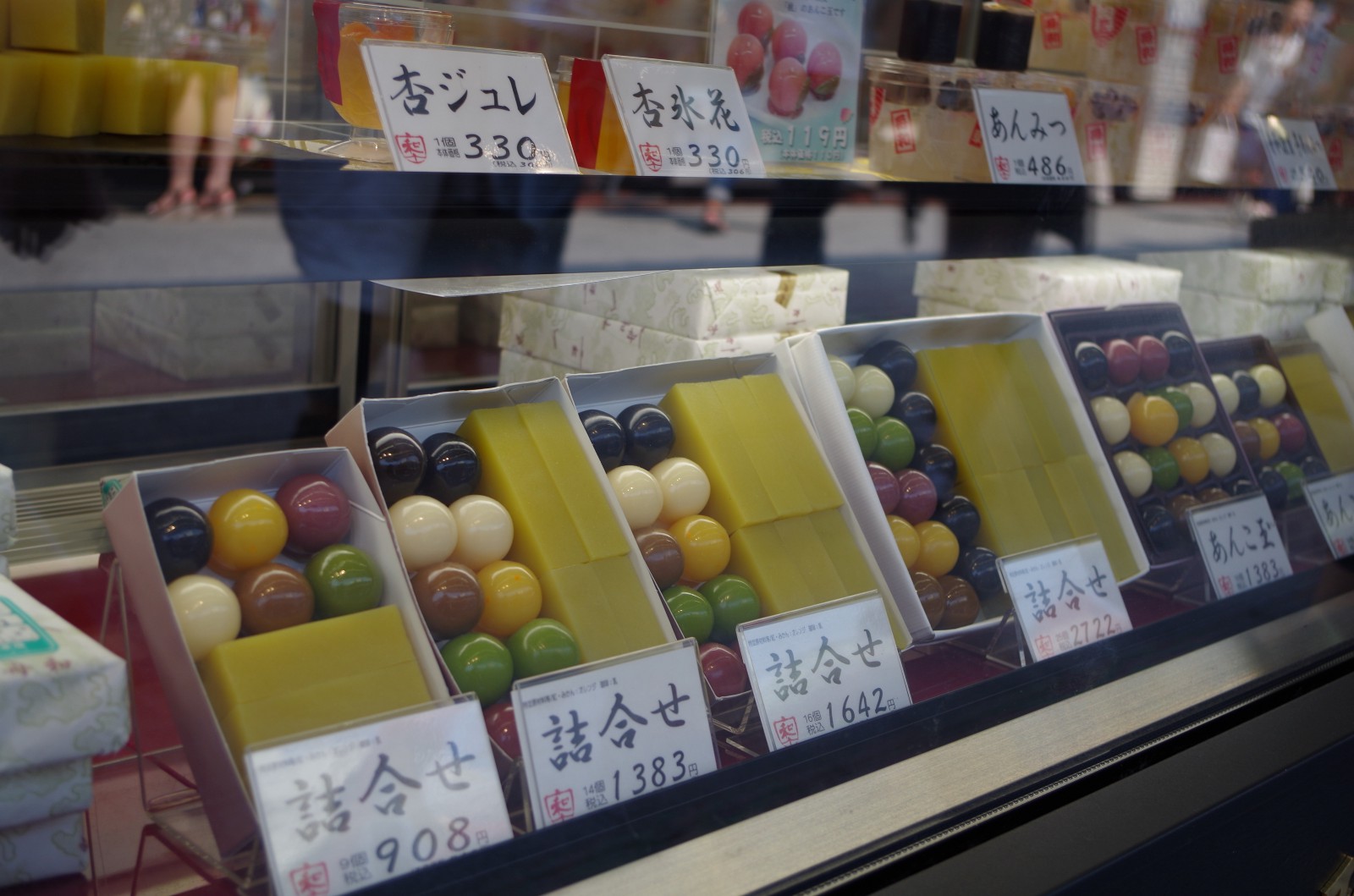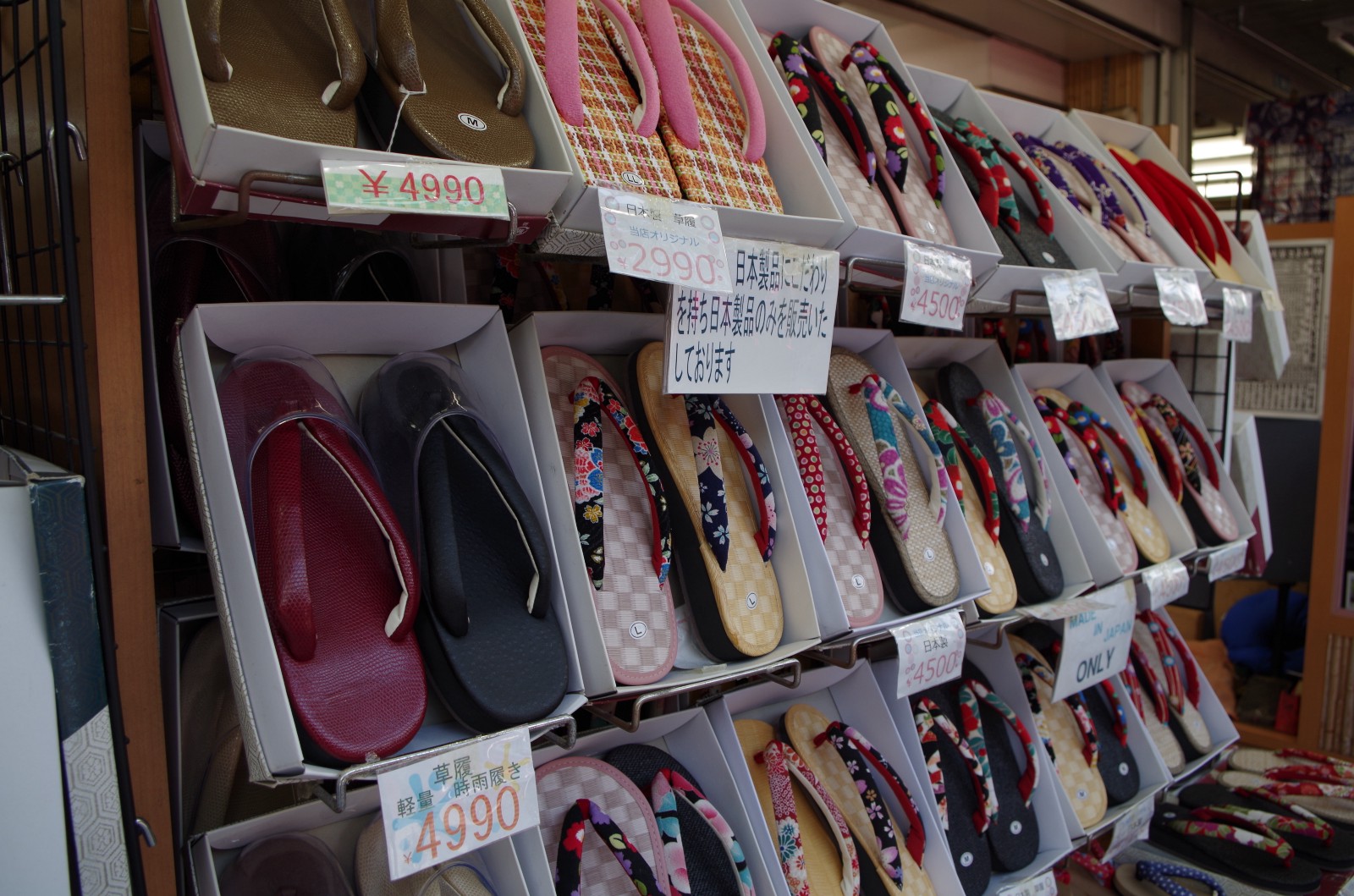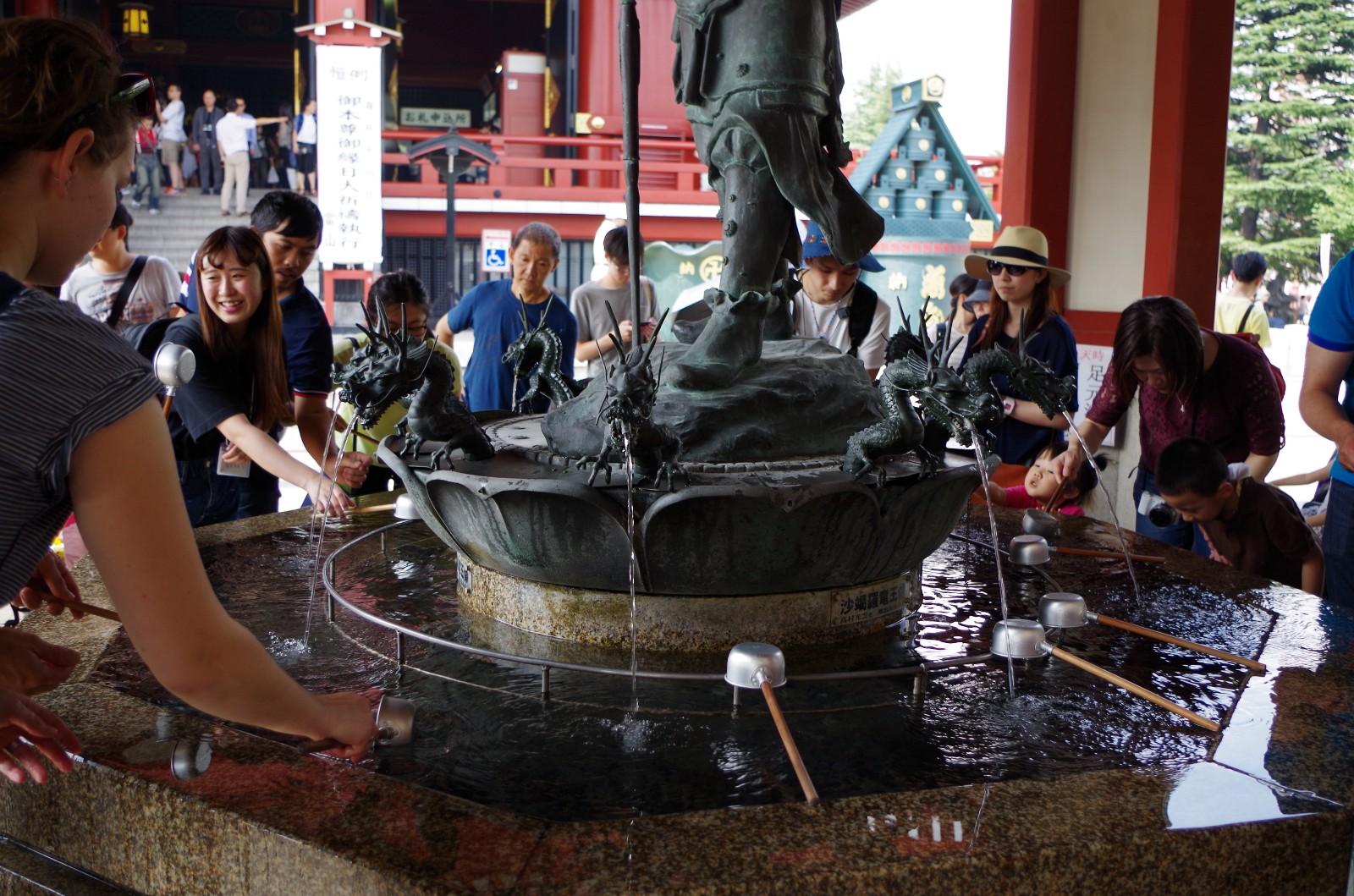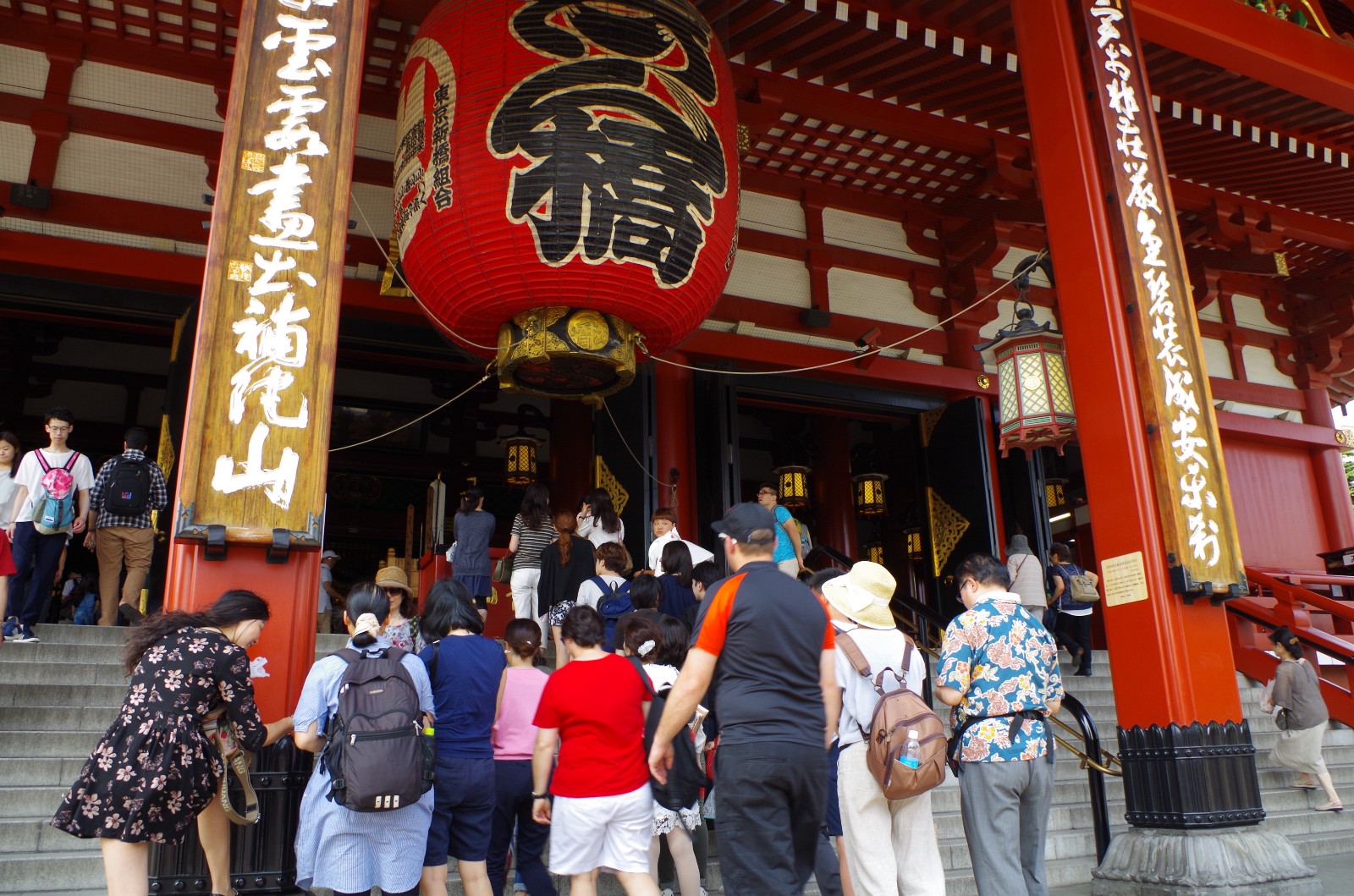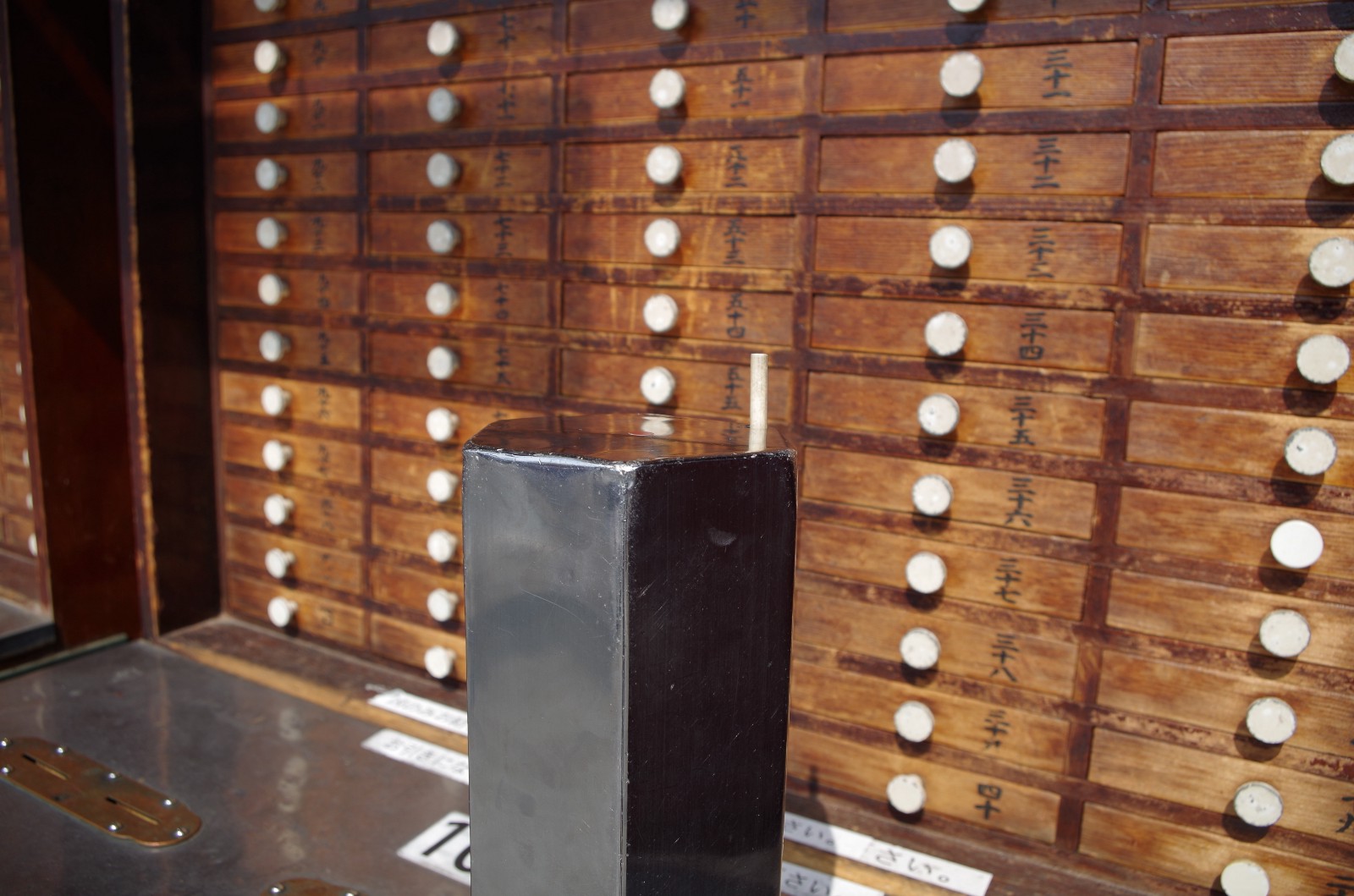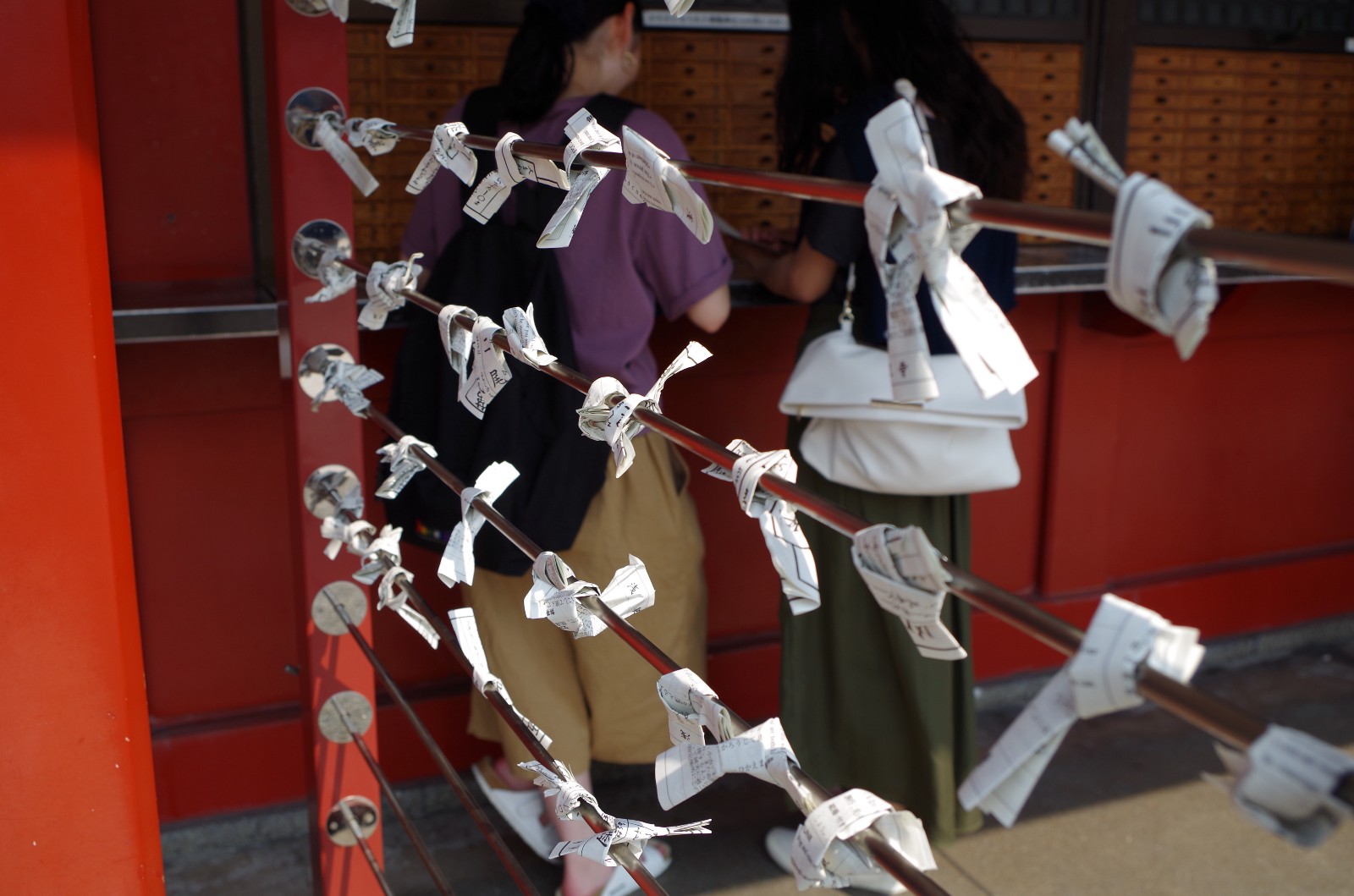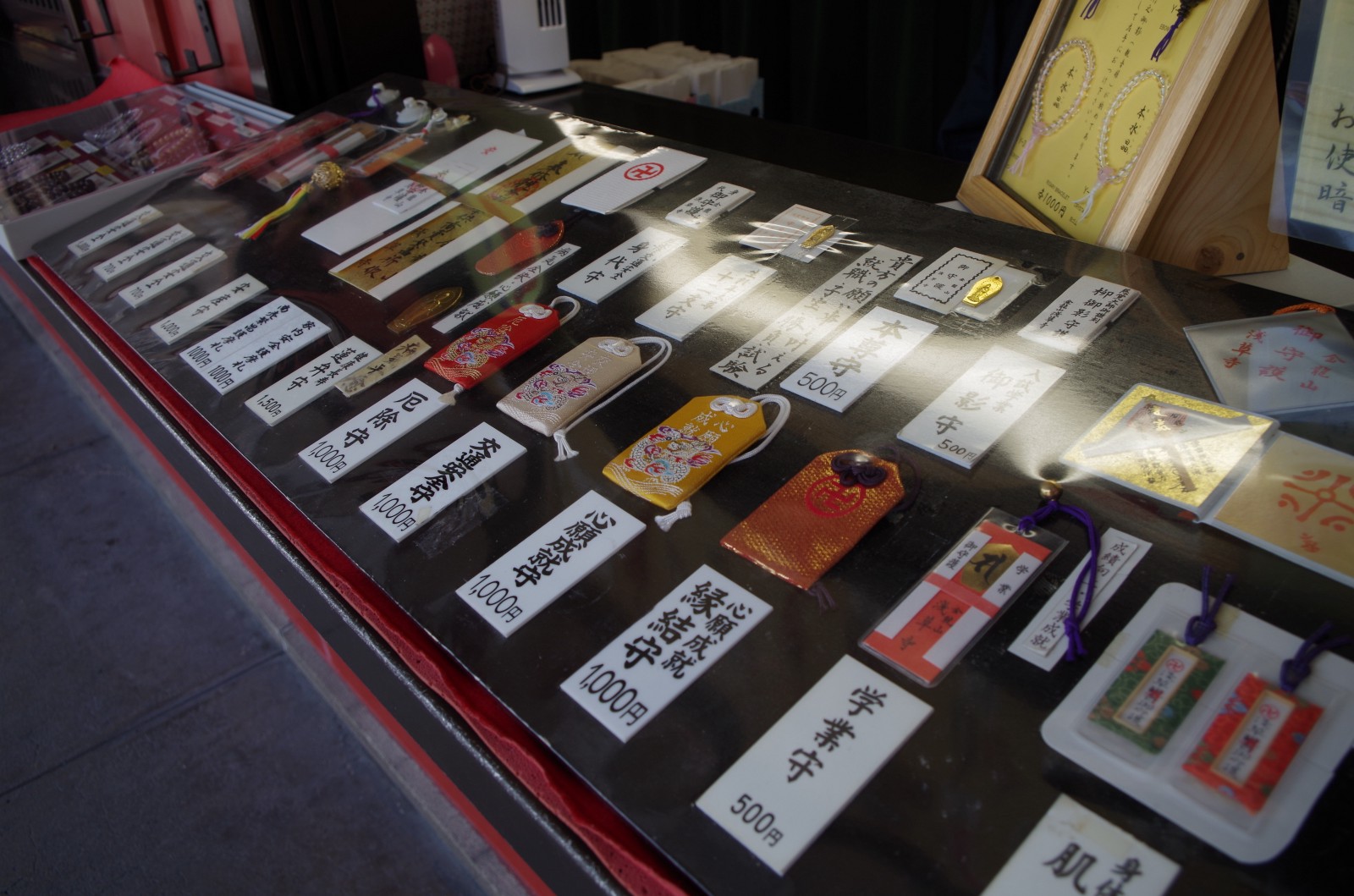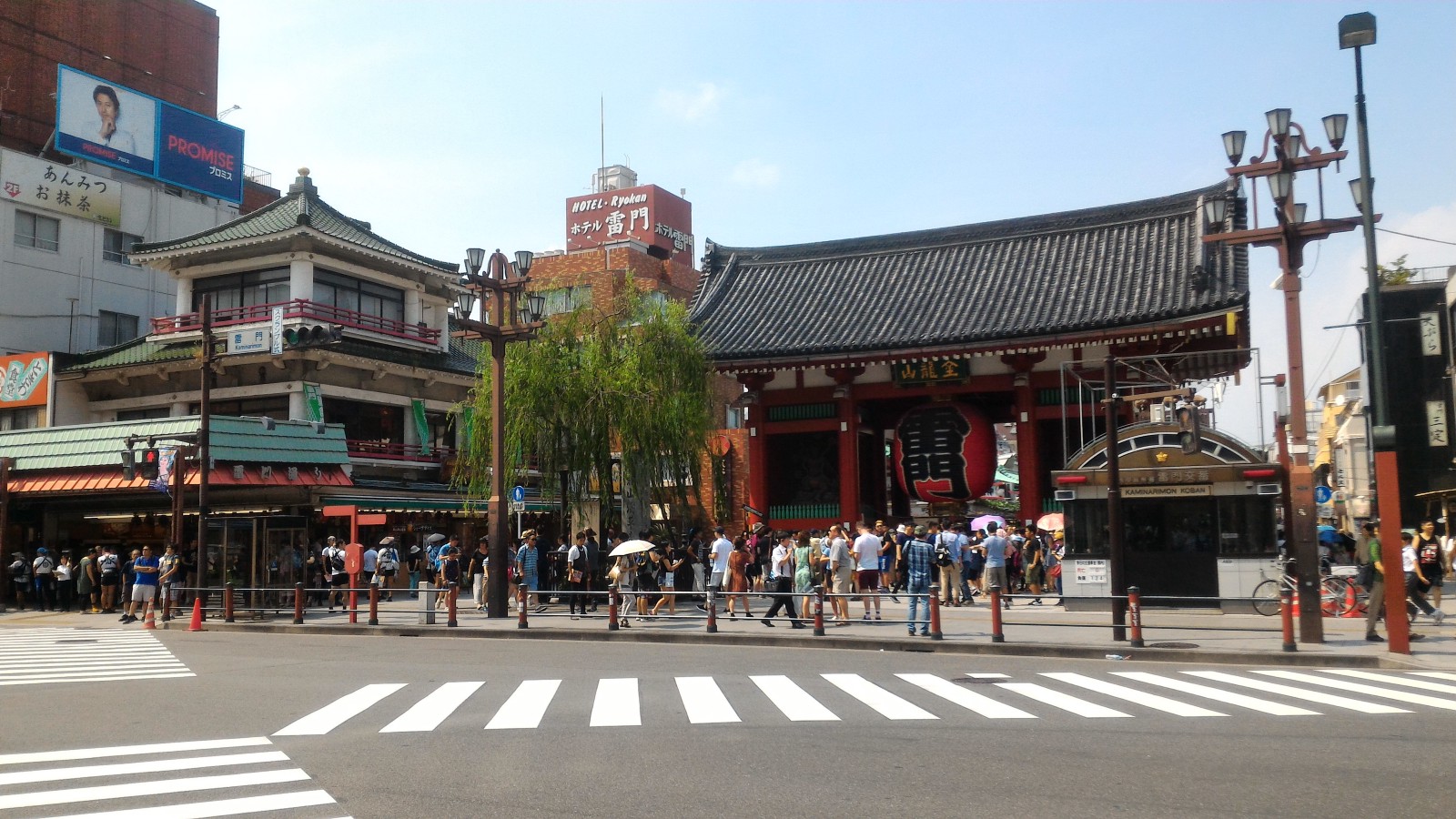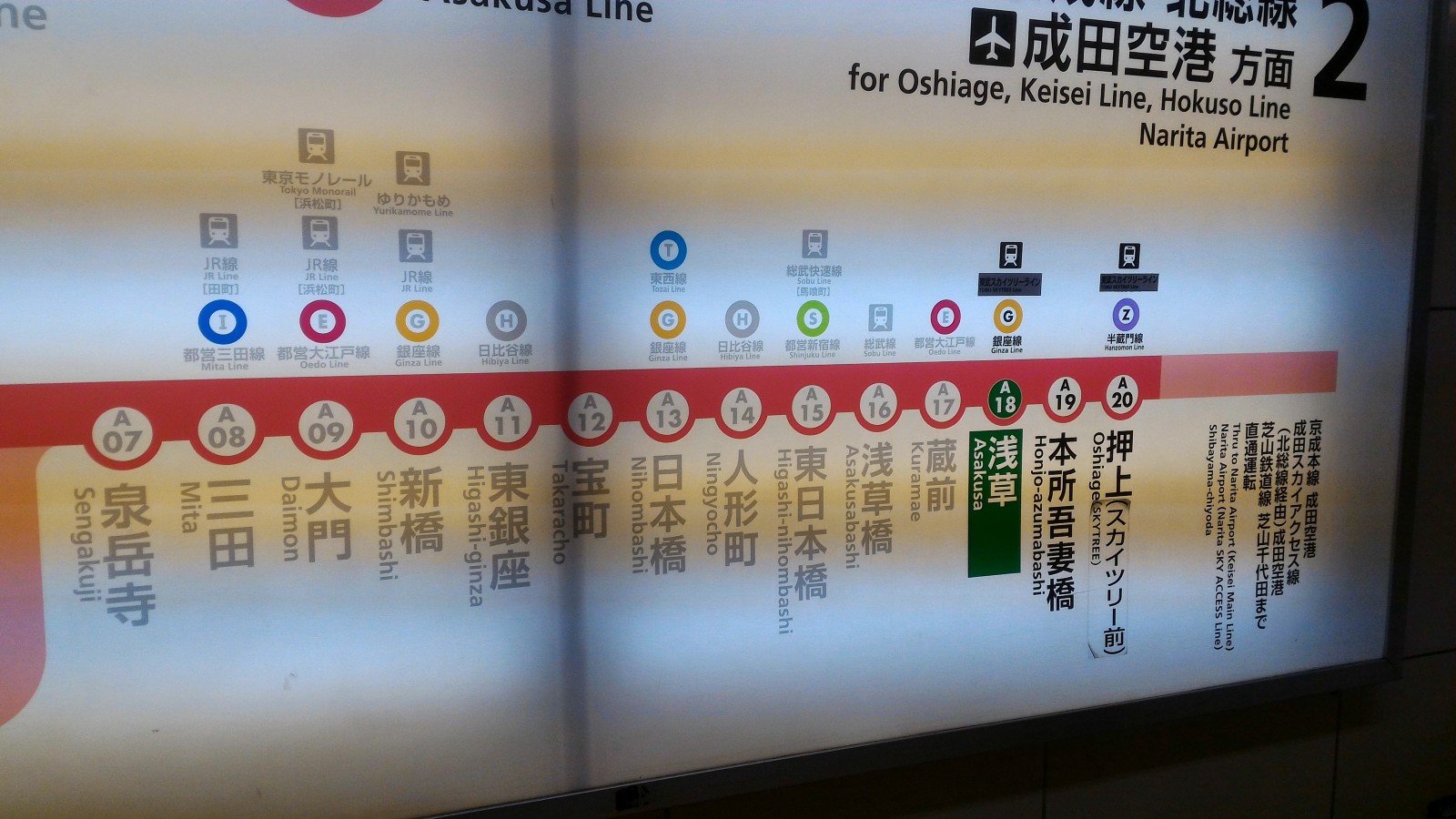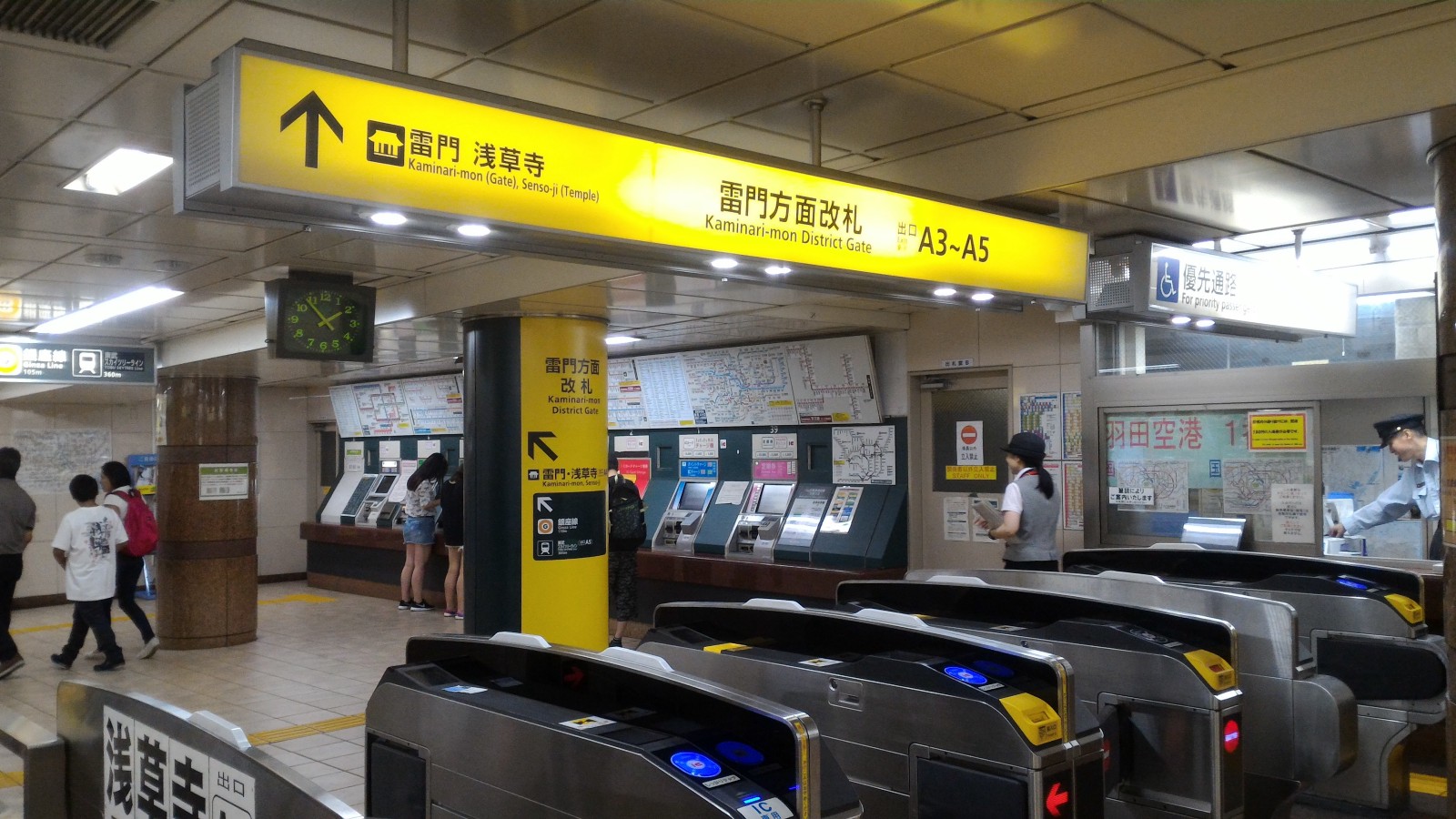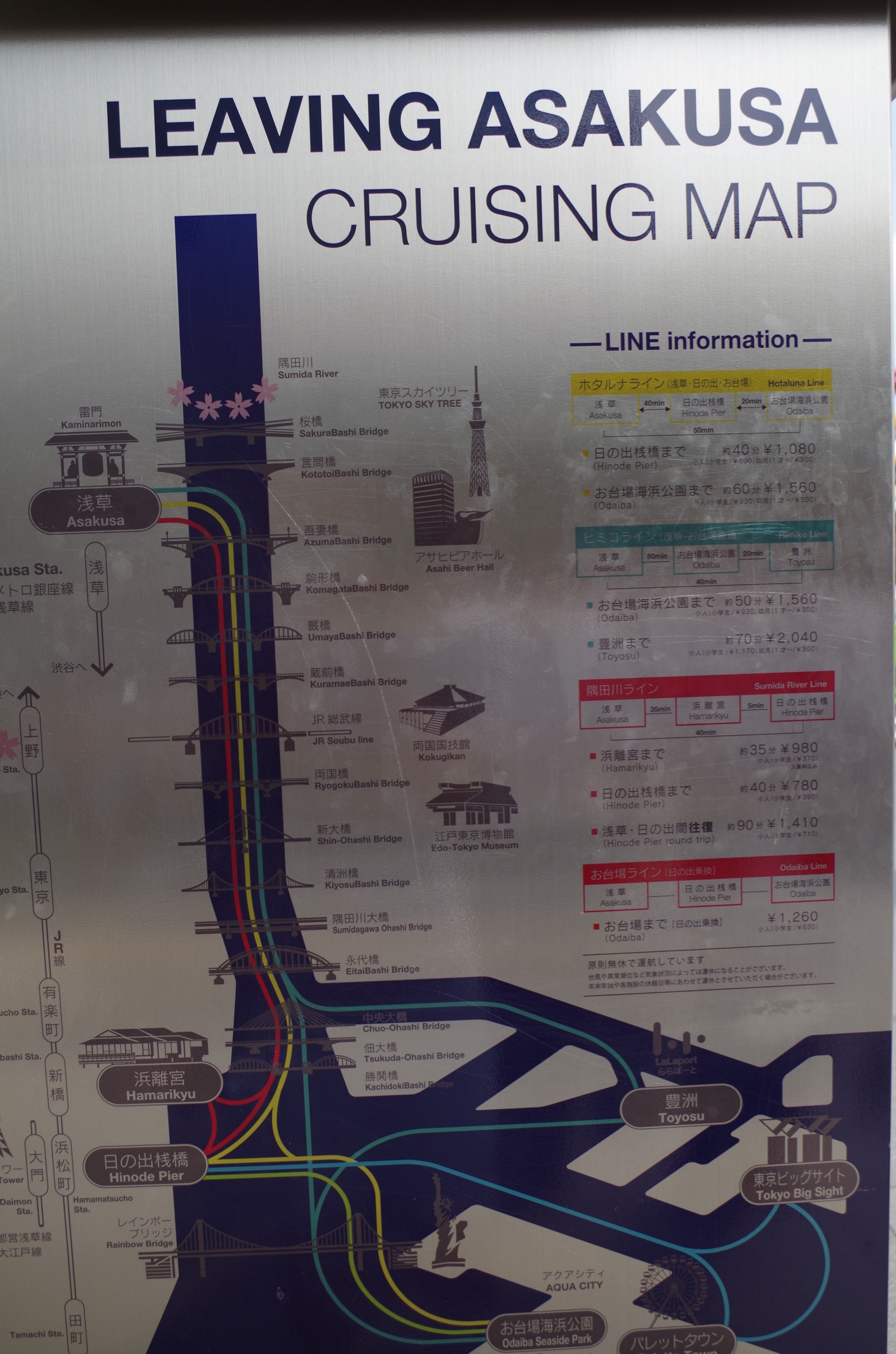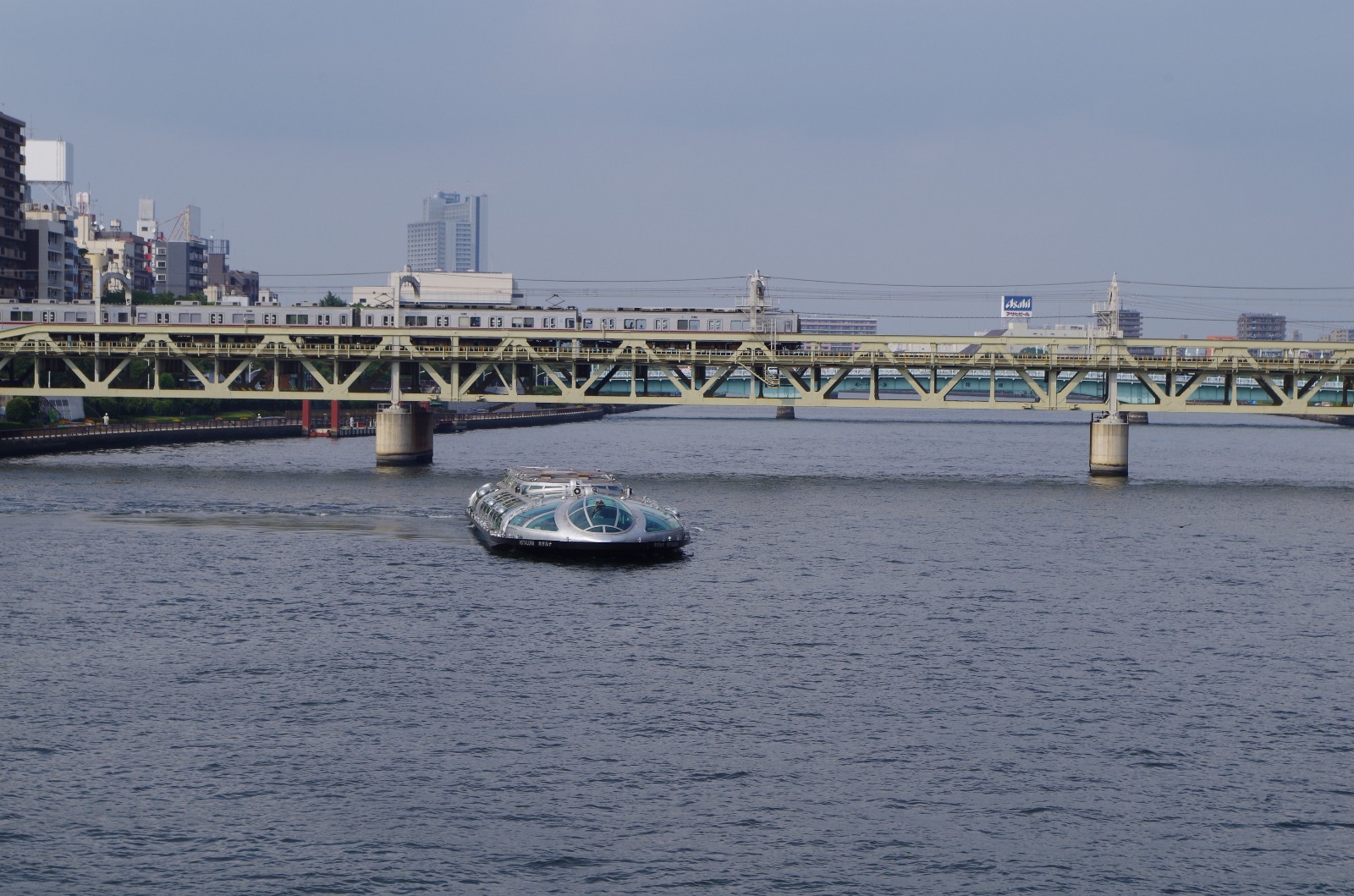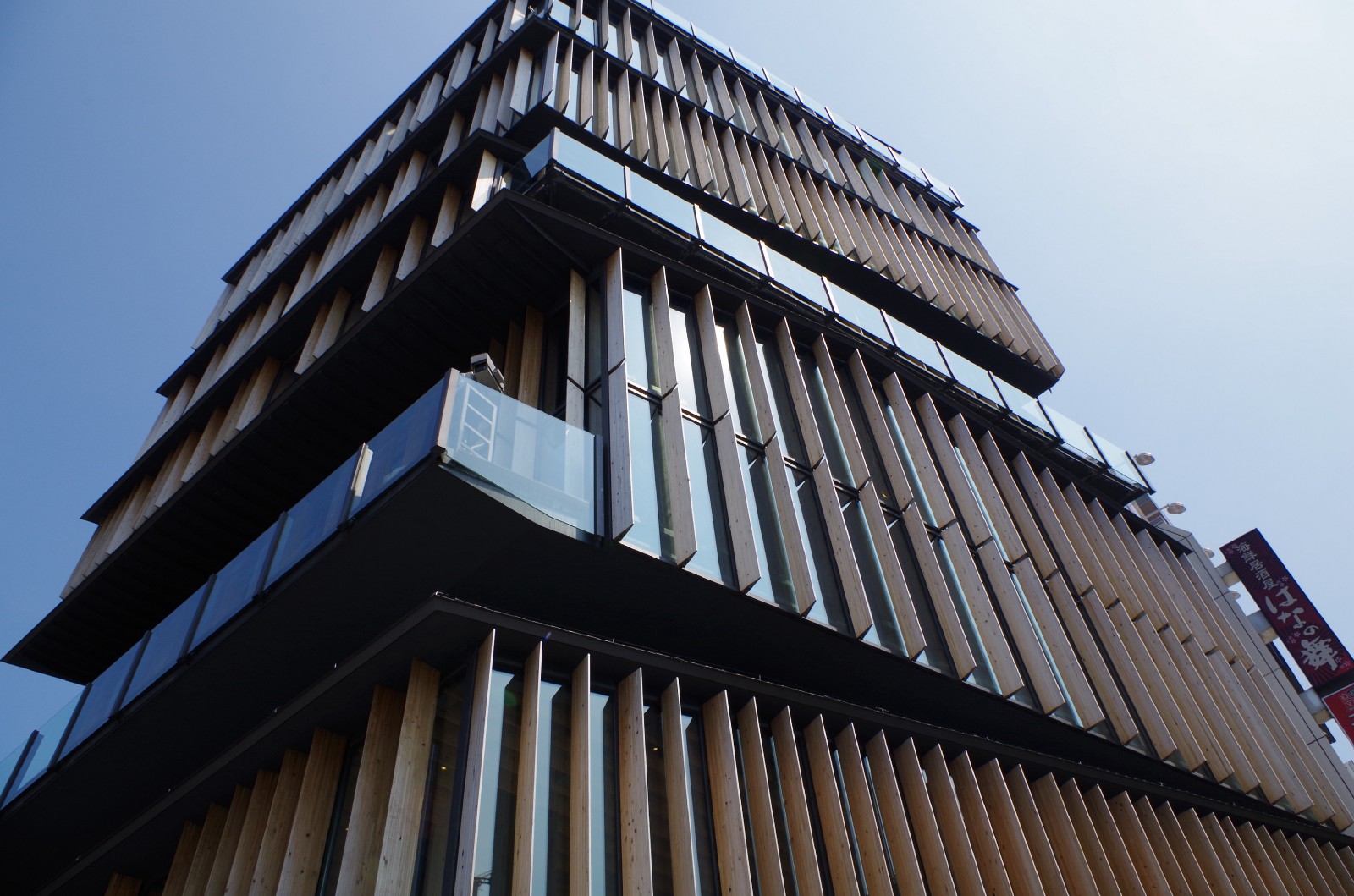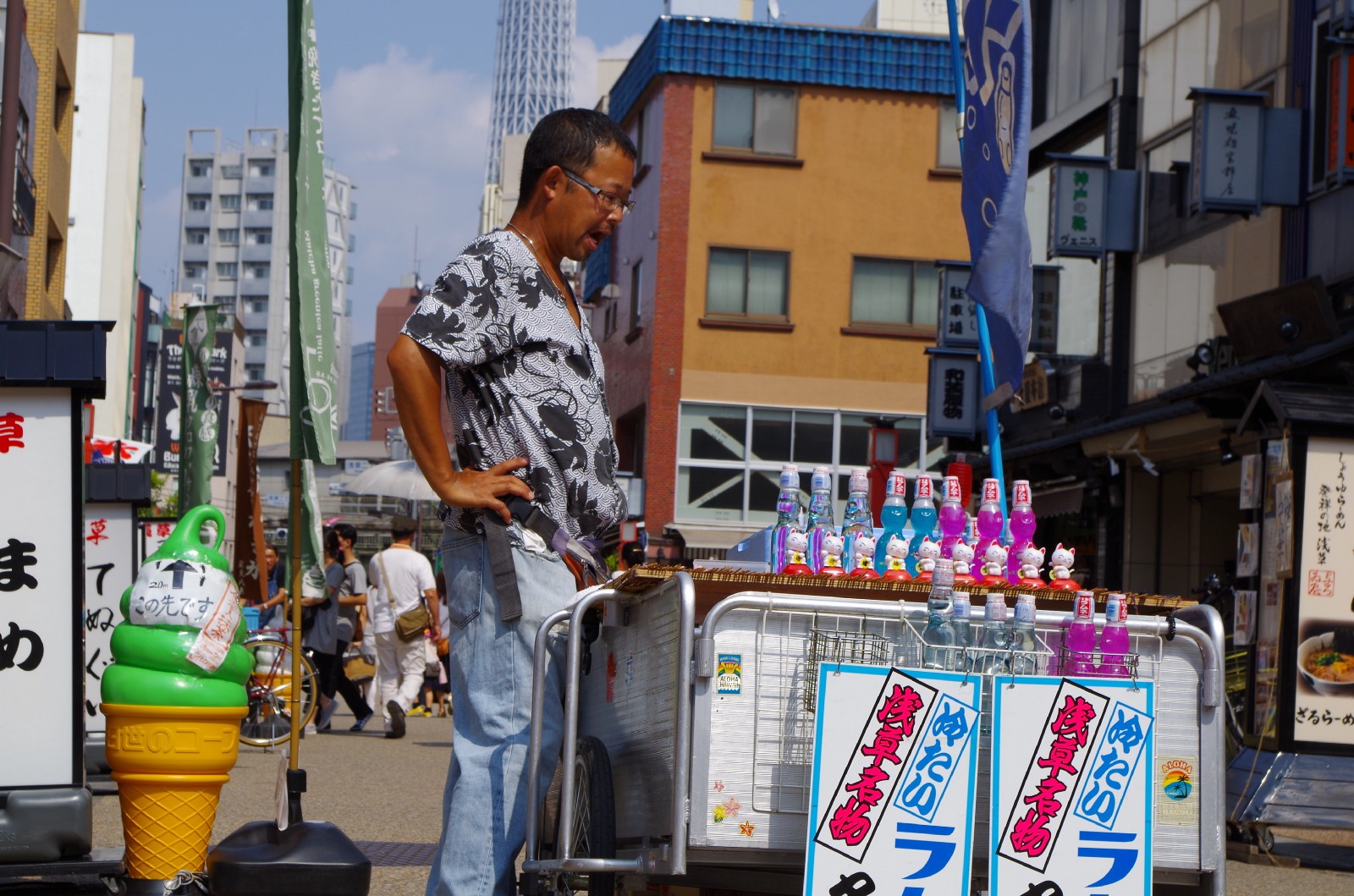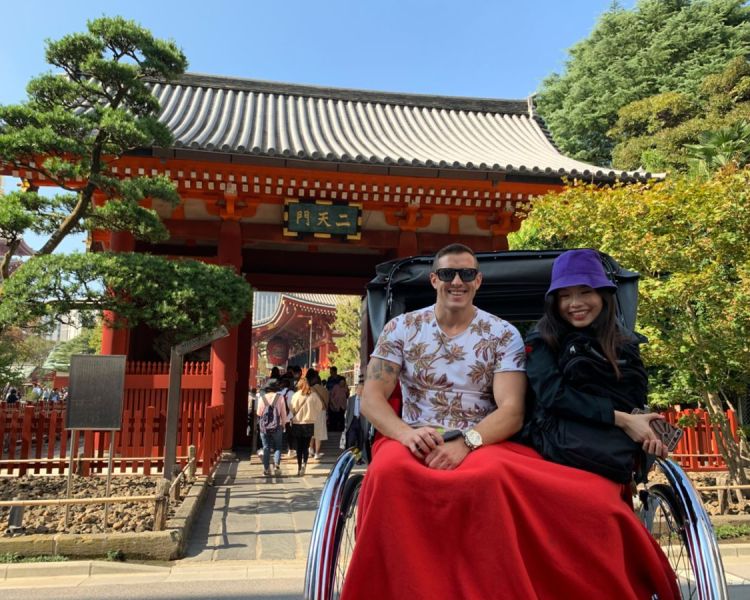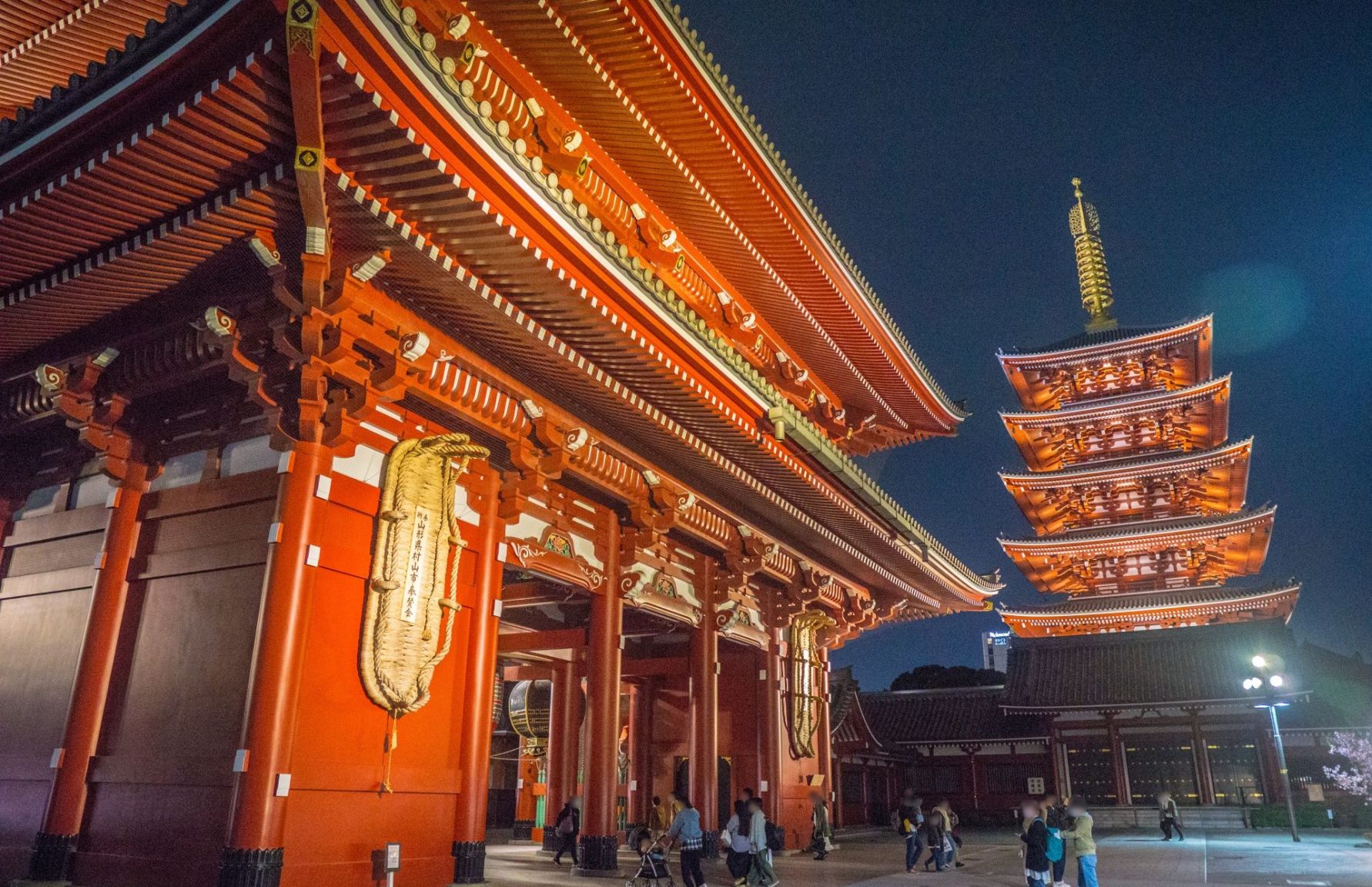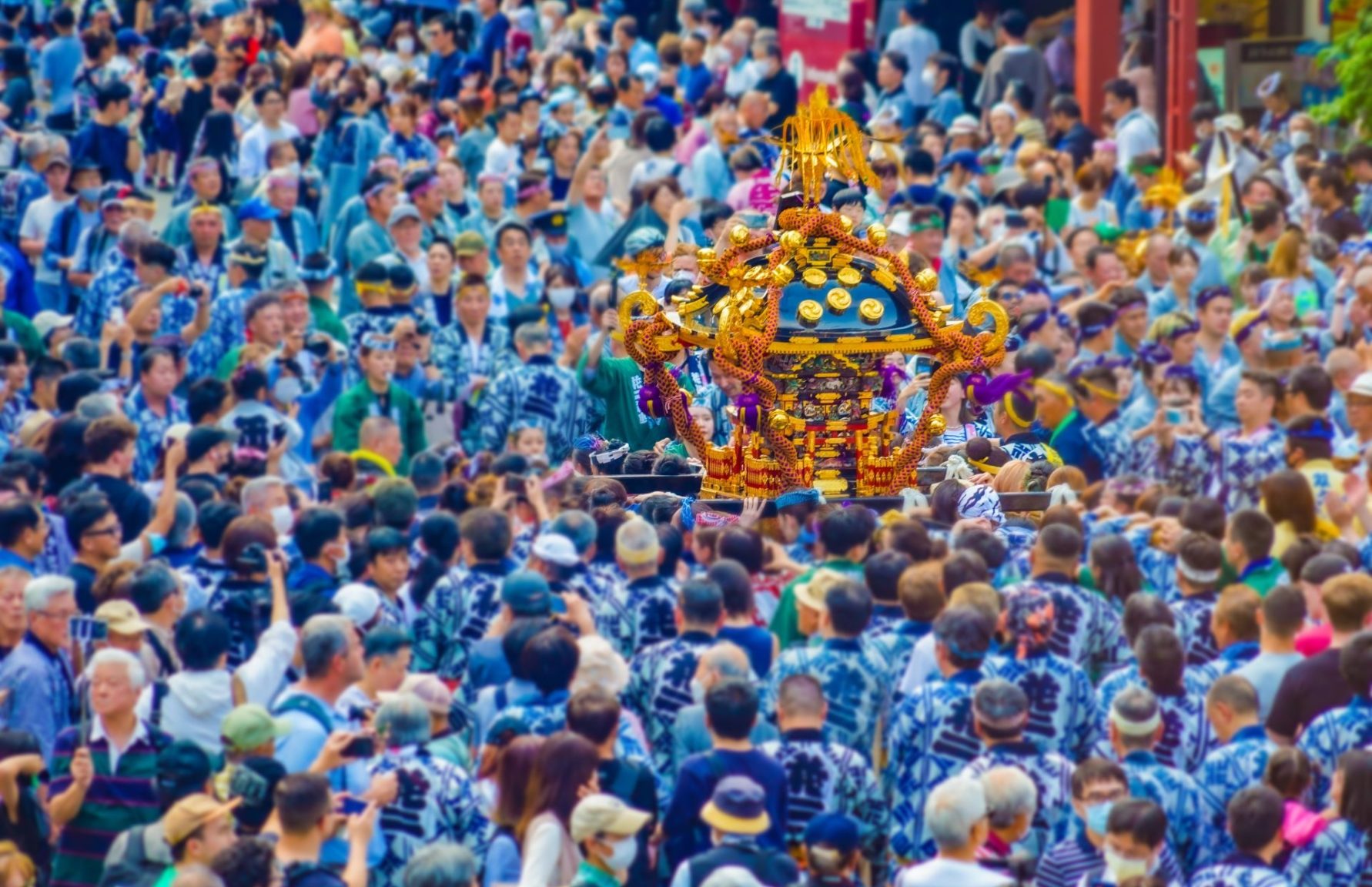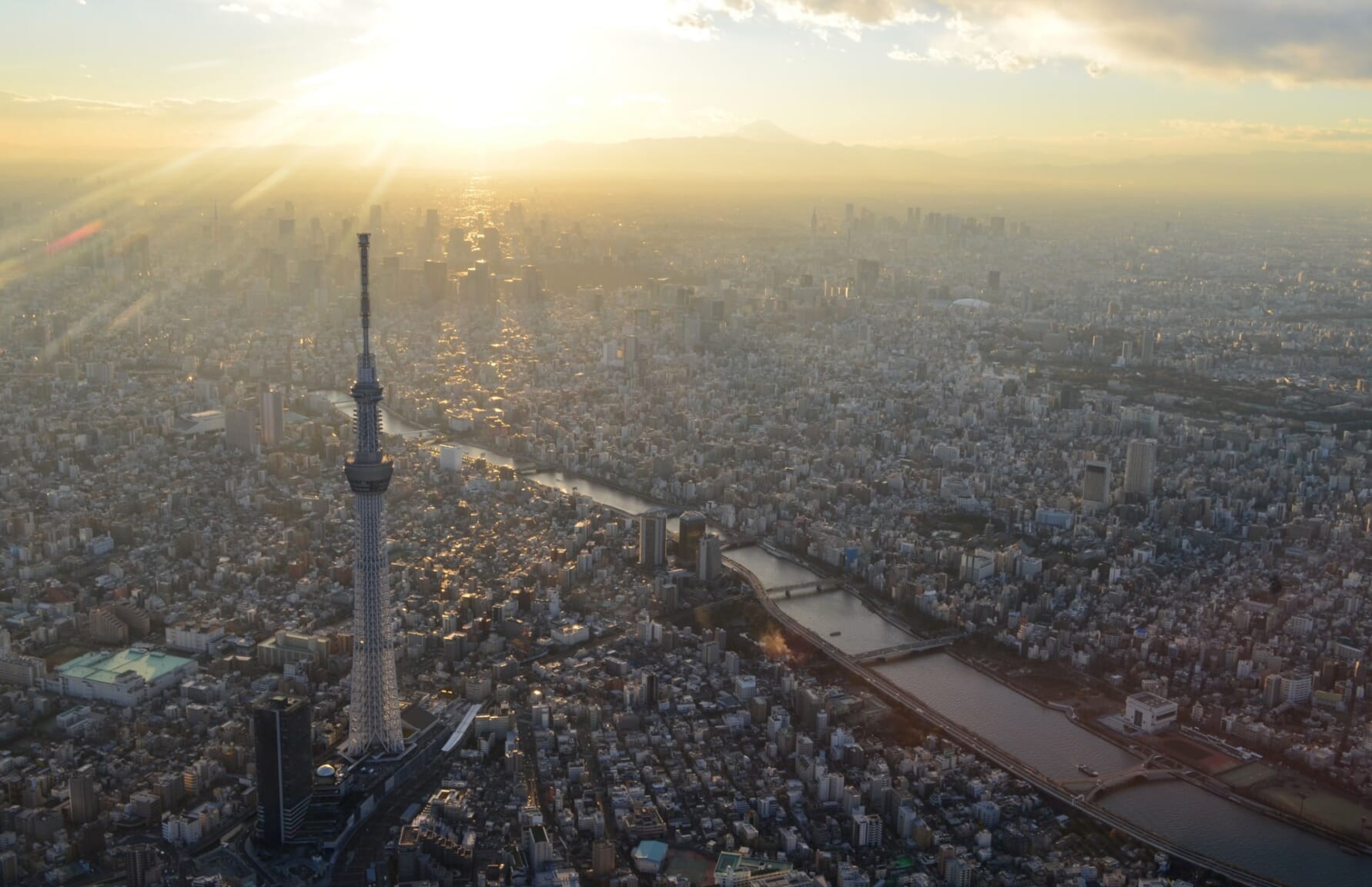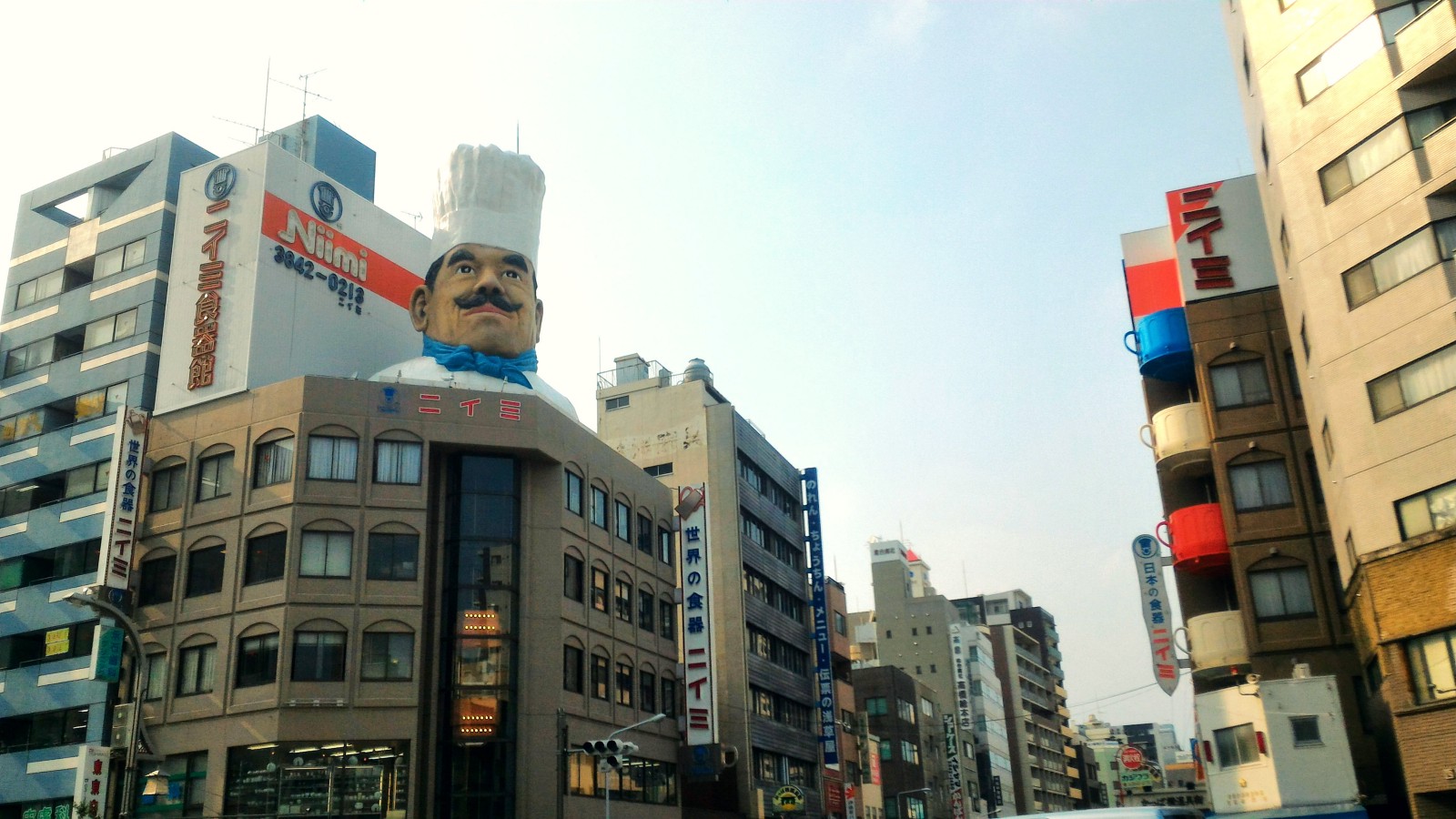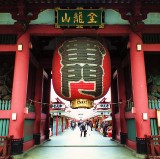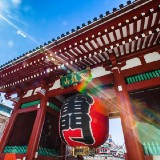Sensoji Temple in Asakusa Tokyo
Asakusa Sensoji Temple : Best things to do at Tokyo’s historic landmark
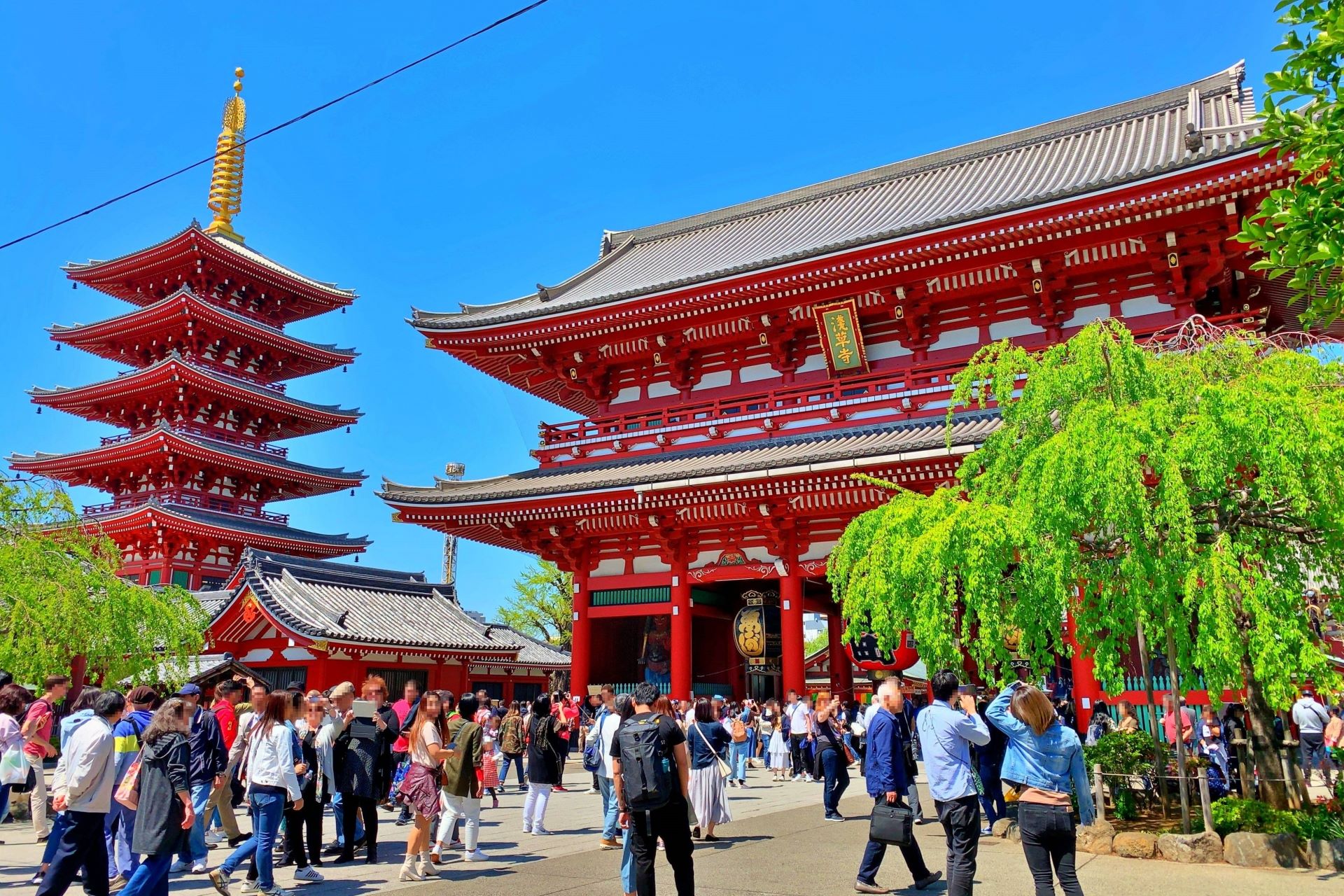
Sensoji Temple is an ancient Buddhist temple located in Asakusa and is one of the most popular tourist attractions in Tokyo. Asakusa still retains a bit of the traditional and historic aspects of Tokyo, standing in stark contrast to the city’s modern and high-tech environment. As the oldest temple in Tokyo, Sensoji serves as a symbol of Asakusa and draws millions of visitors throughout the year.
If you are planning to visit Sensoji Temple, be sure to check out our comprehensive guide to Sensoji Temple, which includes information on how to access it and what to see and do in the Asakusa area!
And if you need a comprehensive overview of the Asakusa area, be sure to check out our All‑in‑One Guide to Asakusa!
*Please note that this article contains affiliate links.
To ensure an authentic and memorable experience in Asakusa, consider enlisting the help of a local guide! The “Asakusa Cultural Walk & Matcha Making Tour” is a highly recommended small group tour led by an English-speaking guide. During this 3-hour tour, you will learn about the rich history and culture of Sensoji Temple and the Asakusa area. The tour includes various cultural experiences, such as a visit to Sensoji Temple, a traditional tea ceremony, and tasting local cuisine. Check the link below for more details about the tour!
What is Sensoji Temple?
Sensoji Temple (浅草寺), also known as Asakusa Kannon, is the oldest temple in Tokyo, originally built in the 7th century, approximately in the year 645, when a renowned Buddhist priest visited Asakusa and built Kannon Hall. The temple complex features two main gates, a scenic approach, a five-story pagoda, and the main hall of the temple.
Asakusa began as a fishing village, but it flourished as the number of worshippers increased. The temple received generous support from the Shogun during the Kamakura period (1192–1333) and the Tokugawa Shogun, Ieyasu, during the Edo period (1603–1867).
Kaminarimon Gate
When you arrive at Sensoji Temple, the first sight is the Kaminarimon Gate (Thunder Gate, 雷門), which serves as the main entrance. It is one of the most popular photo spots in Tokyo!
This vibrant red gate is adorned with a large red lantern featuring the name of the gate in kanji characters in the center, flanked by four gods, two on either side. The front side displays the Shinto deities Fujin (Wind God) and Raijin (Thunder God), while the reverse side shows the Buddhist deities Tenryu and Kinryu, male and female water dragon spirits meant to protect the gate from fire.
Nakamise Shopping Street
After passing through the first gate, you will arrive at the approach to the main hall of Sensoji Temple, known as Nakamise Shopping Street (仲見世商店街). This 250-meter-long passageway features a variety of souvenir shops and food stalls. Take some time to stroll down the street, enjoy trying local street snacks, and shop for souvenirs.
More info: Nakamise Shopping Street: Must-Try Asakusa Street Food
Before you reach the main hall of the temple, you’ll encounter a large gate known as the Hozomon Gate (Treasure Gate, 宝蔵門). This inner gate features a prominent lantern in the center and gigantic Waraji straw sandals on either side. It’s a great spot for taking memorable photos with the gate and the Tokyo Skytree in the background.
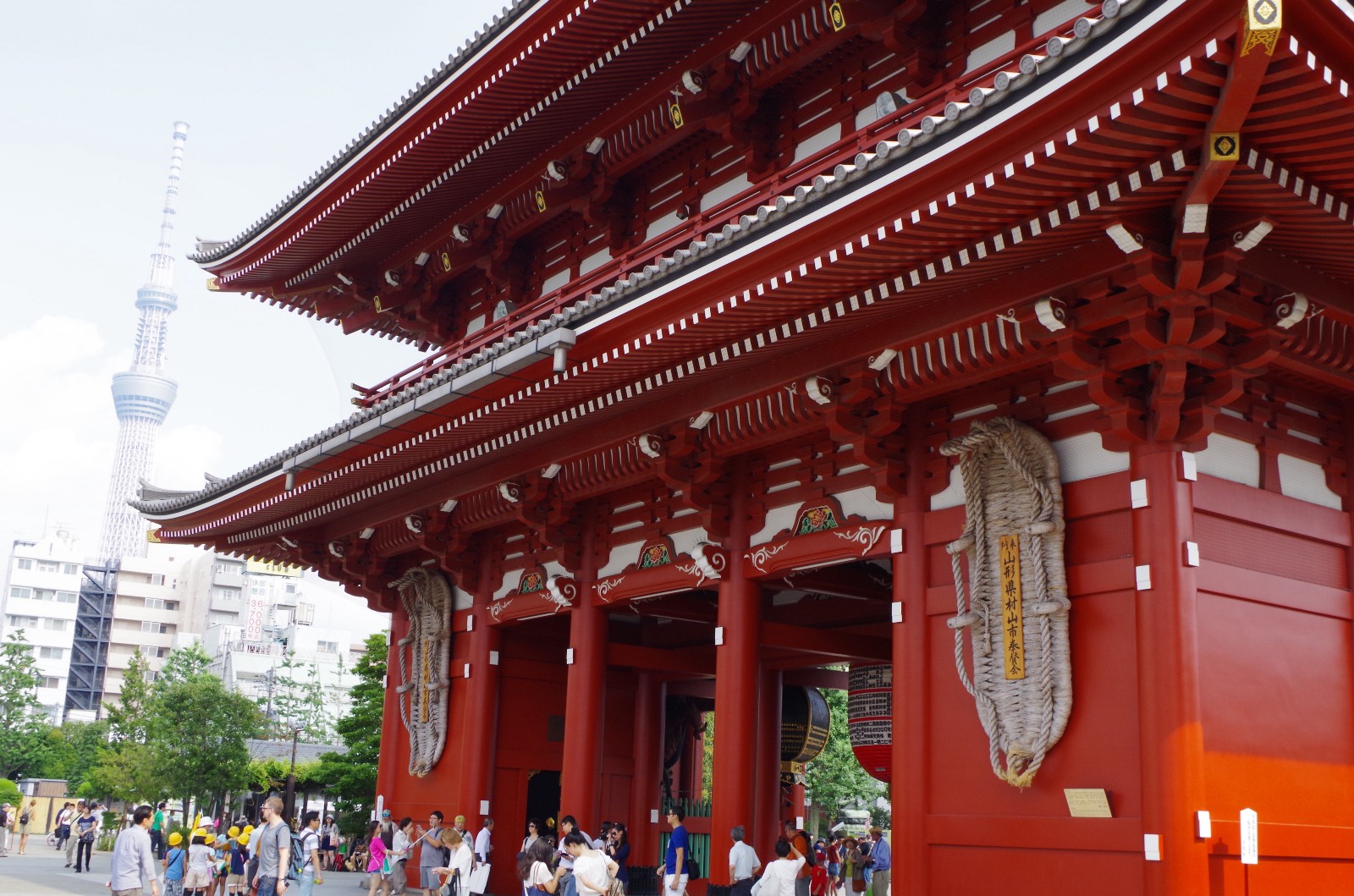
The Main Hall
Beyond the gate is the main hall of the temple, accompanied by a striking five-story pagoda painted in vivid red. The area surrounding the main hall bustles with tourists and worshippers year-round.
What to Do in Sensoji
Feeling the majesty of the temple is not enough. Here is an introduction on how to worship like the local Japanese people.
1. Rinse Your Hands and Mouth
First, wash your left hand with the scoop and your right hand, and then rinse your mouth. Finish by washing the handle with the same water.
2. Touch the Incense Smoke
The smoke is said to help heal injured parts of the body; therefore, draw it toward the affected area by waving your hands.
3. Offer a Small Donation and Pray
If there is a line, stand in it and wait your turn. When it’s your turn, place your money in the offertory box before praying with your hands clasped. As for the quantities you offer, that’s entirely up to you, and there is no set rule for how much each visitor should offer.
For more details about how to worship at temples or shrines, check 3 Differences between Shrine and Temple.
4. Read Your Fortune With an Omikuji (Optional)
You may have noticed that temples or shrines often have a spot with drawers of lucky fortune slips, called omikuji (おみくじ). Sensoji is not an exception. Drawing these slips is a popular custom that can be done anytime, and Sensoji is actually a good place to try it out. Since it’s a very popular temple among international visitors, the Omikuji slips are written both in Japanese and English, which is not the case for most other places in Japan.
The process in Sensoji is quite simple (it may vary slightly in other places):
– Insert a 100 yen coin into the designated slot on the table.
– While making a wish, gently shake the box a few times. A stick marked with a fortune number will emerge.
– Confirm your number and then return the stick to the box.
– Take a sheet of omikuji from the drawer that matches your number and read the contents. If you draw good fortune, remember to stay humble and not to act carelessly or arrogantly. If you draw bad fortune, don’t be afraid. Instead, strive to remain modest and gentle. If the bad luck concerns you, the best way to neutralize it is by tying the folded omikuji on a designated spot that’s usually nearby, as you can see in the following image:
For more details about omukiji, check our dedicated article: Omikuji: Understanding Japanese fortune slips.
5. Get an Omamori Charm (Optional)
Omamori (おまもり) are traditional Japanese lucky charms believed to bring good fortune. They come in various types, each offering different forms of protection, such as safety while driving, good health, or success in studies and business. You can purchase an omamori starting at around 500 yen.
For more details about omamori, check our guide toJapanese Lucky Charms in Shrines and Temples.
Getting to Sensoji and Access Information
The premises of Sensoji Temple are open 24 hours a day, allowing visitors to access the site freely both day and night. However, some facilities, including the main hall of the temple and the shops on Nakamise Street, are closed at night. The temple is illuminated every evening after sunset until 11:00 PM.
Sensoji Temple Main Hall Opening Hours:
6:00~17:00 (April to September)
6:30~17:00 (October to March)
Nakamise Street shops’ business hours vary with each shop, but most tend to close shortly after the Main Hall closes.
Sensoji Temple is just a 5-minute walk from Asakusa Station. There are three recommended ways to reach the Asakusa area: by train, bus, or water bus. Asakusa can be accessed directly from several major tourist areas in Tokyo, including Ueno, Shibuya, and Ginza, as well as from both Tokyo Narita Airport and Haneda Airport. It is also one of the areas most recommended for staying in Tokyo.
By Train
Asakusa Station is served by three railway lines, and it takes approximately a 5-minute walk to reach tourist attractions like Sensoji Temple.
-Tobu Skytree Line (TS-01)
-Toei Asakusa Line (A-18)
-Tokyo Metro Ginza Line (G-19)
-Tsukuba Express
By Bus
–Toei City Bus– 63&64 Ikebukuro Station/ East 42 Tokyo Station/46 Ueno Station
–Tobu Skytree Shuttle Bus — Connecting Tokyo Skytree and Ueno area via Asakusa
–Megurin — The Sightseeing loop bus in Taito ward
–SKY BUS– Open-top double-decker sightseeing bus you can hop in and off at several tourist sites in Tokyo
By Water bus
One of the most exciting ways to explore Tokyo is by taking the “Tokyo Cruise,” which travels along the Sumida River and Tokyo Bay, connecting Asakusa and Odaiba with several stops at various sightseeing spots. While the fare may be higher than other forms of public transportation, the stunning views of the city from the water are truly priceless.
There are two water bus service companies that operate in the Asakusa area:
–Tokyo Cruise
–Tokyo Mizube Cruising
<<Book a Cruise between Asakusa and Odaiba by Tokyo Mizube Line in Tokyo!>>
By Private Transfer
Want to travel directly to Asakusa from the airport or your hotel? Airport Taxi is one of the best services for transfers to and from Narita and Haneda airports.
Now JWM readers have a 1,000JPY discount if they book with Airport Taxi!!
Coupon Code: JWM2023
Things to Do around Sensoji Temple in Asakusa
When you visit Asakusa, exploring Sensoji is only the start. Here we suggest some fun things you can do before or after visiting the temple.
For the full rundown of activities available in the area, check our guide of Best Things to Do in Asakusa.
1. Check Out the Tourist Information Center
When you arrive in Asakusa, it’s a good idea to visit the Asakusa Culture Tourist Information Center for tourism information. It’s right across the street from Kaminarimon Gate. They provide guidance in Japanese, English, Chinese, and Korean, as well as free Wi-Fi and access to internet PCs. The building has eight stories and features a café, an exhibition hall, and an observation deck on the 8th floor, which offers a fantastic view of Nakamise Street and Sensoji Temple.
Hours: 9:00~20:00 (observation deck until 22:00)
2. Munch Street Food
Nakamise Street and the surrounding area in Asakusa are a paradise for street food, featuring dozens of food stalls and shops. From authentic Japanese snacks to Instagram-worthy sweets, you’ll find a variety of delicious street food that you can enjoy while sightseeing in Asakusa. It’s the perfect place to experience “Tabearuki,” which means “eat and walk” in Japanese.
More info: Best 6 Street Food in Asakusa
3. Ride a Rickshaw
What better way to explore the old downtown of Tokyo than by taking a rickshaw ride? In front of Sensoji Temple, you’ll find numerous rickshaws and drivers available for hire. Some companies even organize short tours to showcase the best highlights of the Asakusa area.
<<Book your historical rickshaw tour in Asakusa here!>>
4. Visit Sensoji Temple at Night
Asakusa is a wonderful place to explore at night. While the main hall of Sensoji Temple is open daily from 6:00 AM to 5:00 PM and many shops on Nakamise Street close in the evening, you can still visit Sensoji Temple after hours. This time of day offers a fantastic opportunity for photography, as there are far fewer crowds compared to the daytime. Additionally, the temple is beautifully illuminated every evening after sunset until 11:00 PM.
5. Bar Hopping
Asakusa has numerous hidden izakayas (Japanese-style bars) and local restaurants, making it one of the most attractive areas in Tokyo to hang out at night.
Recommended Night Tour:
6. Attend Sanja Matsuri
If you find yourself in the area around mid-May, you’re in for a treat! This is the perfect opportunity to experience the Sanja Matsuri (Sanja Festival), Tokyo’s largest traditional festival held at Sensoji Temple. The festival features numerous Mikoshi (portable shrines) carried through the neighborhood, creating a lively and energetic atmosphere. The event lasts for three days in mid-May and attracts over 2 million visitors.
More info: Sanja Matsuri: Tokyo’s Biggest Festival
7. Extend your trip to Tokyo Skytree
Tokyo Skytree is located less than 2 kilometers from Sensoji Temple, making it one of the best spots to visit in the area. You can reach it by train (using the Toei Asakusa Line or Tobu Skytree Line, which takes about 10 minutes), by bus (routes №8 or 26, approximately 15 minutes), or by walking, which takes about 20 to 30 minutes. Walking allows you to enjoy the beautiful scenery of the Asakusa area and the banks of the Sumida River.
<<Book your Tokyo Skytree Observation Deck tickets here!>>
More info: Tokyo Skytree: The New Symbol of Modern Tokyo
8. Hunt Kitchen Tools in Kappabashi
Kappabashi Street is located less than a 10-minute walk from Sensoji Temple. This 1-kilometer-long street is lined with over 170 shops that exclusively sell products related to the food industry, such as kitchenware and restaurant equipment. It is a highly popular shopping destination for professional chefs from around the world, particularly known for its impressive selection of Japanese knives. Visitors can also find unique souvenirs, including food samples and tableware, along Kappabashi Street.
More info: KAPPABASHI : Best Street to Shop in Tokyo for Chefs!
Thank you very much for reading! If you are visiting Sensoji Temple in Asakusa, you may wanna check out these articles, too!
Written by
"The world is my oyster." As a dedicated globetrotter and hammock enthusiast, I’ve spent years chasing new experiences, collecting stories, and discovering the world’s most incredible destinations. Born and raised in Japan, I’ve always had a deep connection to my roots, but my love for adventure has led me to spend over a decade exploring countries across the globe—from culture-rich cities to remote hideaways.
Travel isn't just a hobby for me; it's a lifestyle. I'm constantly searching for new ways to fuel my wanderlust. Over the years, I’ve developed a wealth of knowledge and a treasure trove of tips that make traveling more enjoyable, practical, and meaningful.
Through my experiences, I've come to appreciate not only the beauty of travel but also the importance of understanding diverse cultures, embracing the unfamiliar, and stepping out of my comfort zone. My travels have shaped who I am today, and I’m excited to share those lessons with others.
With Japan Web Magazine, I aim to offer practical advice, insider tips, and firsthand stories that help travelers navigate their journeys to Japan or setting off on a global adventure. From hidden gems in Japan to travel hacks that make any trip smoother, I hope my insights inspire you to embark on your own adventures and make the most of every moment. Let’s explore the world together!
You can also find my stories here ▶ https://medium.com/@nahobm






